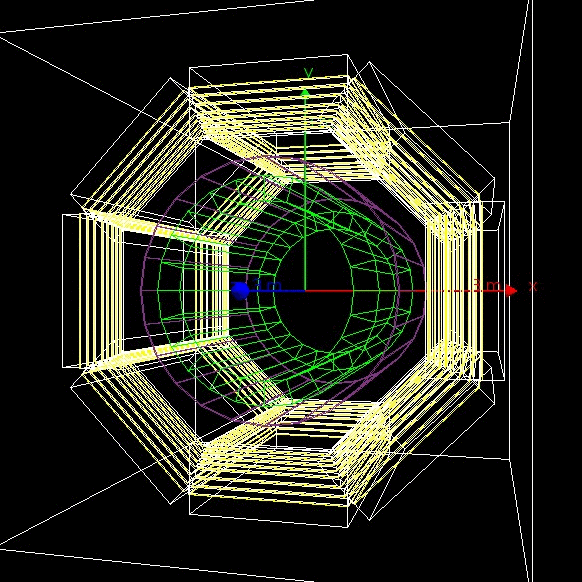Muon system simulation
From Charm-Tau Detector
Revision as of 20:52, 30 October 2018 by UglovTimofey (Talk | contribs)
Contents |
This page is dedicated to the sketch standalone simulation of the SCT detector based on pure Geant4
One of the most important and urgent tasks for muon system technology choice and further optimization is to create a fast and reliable simulation tool. Optimal toolkit in this case is pure Geant4 simulation with simplified geometry and physics lists, able to produce fast results and estimate main parameters and characteristics of the detector.
Tasks for the 0.1 version of the simulation tools
- Create geant4-based geometry description reflecting all main features influencing muon-related physics. The model are to be extendible to describe muon detector in detail if needed.
- Estimate basic features of the interacting muons (despite of the detector technology choice):
- Muon smearing due to the multiple scattering (depending of the muon energy, direction and/or specific production process; magnetic field ON/OFF)
- Desirable thickness of the muon system to reach maximal muon detection efficiency
- Muon/pion separation: decay point (detector layer) for the muons and pions of the same momentum, feasibility do distinguish processes based on this information
- Feasibility to distinguish pion kink: distinguish muons originated from the primary vertex and produced in the pion decays.
The geometry used in version 0.1 simulation
The following geometry is based mostly on the this drawings.
For simplicity, only the barrel part of the detector was simulated. The full simulation is possible, but not urgent for the first estimation.
- The following parts of the detector were simulated:
- CsI calorimeter (inner radius 1090mm, thickness 297.6 mm, which corresponds to 16 X0)
- Magnet coil (inner radius 1610mm, thickness 14.4 mm of copper, which corresponds to 1 X0)
- 9 iron absorber layers in octant geometry (see the drawings). The distance to the innermost layer is 1900mm from the beamline, the thickness of the absorber layers 30 mm,30 mm,30 mm,40 mm,40 mm,80 mm,80 mm,80 mm, respectively, which roughly corresponds to 1.7 X0, 1.7 X0, 1.7 X0, 2.3 X0, 2.3 X0, 4.5 X0, 4.5 X0, 4.5 X0.
- The 30 mm gaps between the absorber layers could be filled with organic scintillator for the energy measurement (not needed for now)
- Internal elements of the detector are estimated to give from 0.35 X0 to 0.6 X0 and are neglected in this study
- Magnetic field is NOT simulated (could be turned on if needed, though)
- Green: CsI calorimeter
- Violet: Cu magnet coil
- White: Fe absorber layers
- Yellow: Organic scintillator gaps
The source
Muons and pions were simulated as particles originated from the primary vertex according to the various physical distribution, taken from these samples. Only one particle per event was simulated.

